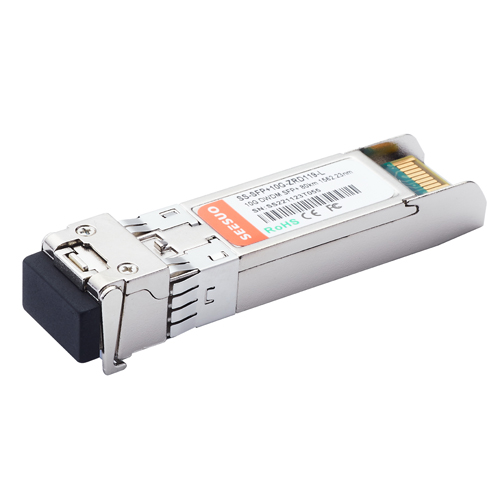- Related articles
- All Cisco DWDM-SFP10G-50.12's information (List price, Specs, Datasheet PDF, Compatibility
- 10GBASE-T or SFP Plus
- Optical Transceivers for Cisco SG300-10MPP-K9-EU Switch
- Optical Transceivers for Cisco SG300-10SFP-K9-EU Switch
- What Is GYAXTC8Y Fiber Optic Cable?
- Optical Transceivers for Cisco WS-C3650-48FD-S Switch
- What Is GYTA Fiber Optic Cable?
- All Cisco DWDM-X2-30.33's information (List price, Specs, Datasheet PDF, Compatibility mat
- Optical Transceivers for Cisco WS-C4500X-F-32SFP+ Switch
- Optical Transceivers for Cisco WS-C2960S-48TS-L Switch
Recommend tag

What is a DWDM transceiver?
2016-07-15
Definition:
In fiber-optic communications, wavelength-division multiplexing (WDM) is a technology which multiplexes a number of optical carrier signals onto a single optical fiber by using different wavelengths (i.e., colors) of laser light. This technique enables bidirectional communications over one strand of fiber, as well as multiplication of capacity.
WDM systems are divided into different wavelength patterns, coarse (CWDM) and dense (DWDM) in that way they lance CWDM and DWDM transceivers. Coarse WDM provides up to 16 channels across multiple transmission windows of silica fibers. Dense wavelength division multiplexing (DWDM) uses the C-Band(1530 nm-1560 nm) transmission window but with denser channel spacing. Channel plans vary, but a DWDM transceivers would use 40 channels at 100 GHz spacing or 80 channels with 50 GHz spacing. Some technologies are capable of 12.5 GHz spacing (sometimes called ultra dense WDM). New amplification options (Raman amplification) enable the extension of the usable wavelengths to the L-band, more or less doubling these numbers.
Common information:
DWDM transceivers refer originally to optical signals multiplexed within the 1550 nm band so as to leverage the capabilities (and cost) of erbium doped fiber amplifiers (EDFAs), which are effective for wavelengths between approximately 1525–1565 nm (C band), or 1570–1610 nm (L band). EDFAs were originally developed to replace SONET/SDH optical-electrical-optical (OEO) regenerators, which they have made practically obsolete. EDFAs can amplify any optical signal in their operating range, regardless of the modulated bit rate. In terms of multi-wavelength signals, so long as the EDFA has enough pump energy available to it, it can amplify as many optical signals as can be multiplexed into its amplification band (though signal densities are limited by choice of modulation format). EDFAs therefore allow a single-channel optical link to be upgraded in bit rate by replacing only equipment at the ends of the link, while retaining the existing EDFA or series of EDFAs through a long haul route. Furthermore, single-wavelength links using EDFAs can similarly be upgraded to WDM links at reasonable cost. The EDFA's cost is thus leveraged across as many channels as can be multiplexed into the 1550 nm band.
Components:
A basic DWDM transceivers contains several main components:
A DWDM terminal multiplexer
An intermediate line repeater
An intermediate optical terminal, or optical add-drop multiplexer
A DWDM terminal demultiplexer
Optical Supervisory Channel (OSC)
What is a DWDM link?
Dense wavelength division multiplexing (DWDM) is a technology that puts data from different sources together on an optical fiber, with each signal carried at the same time on its own separate light wavelength.
Please click to check more related concepts:
| Transceivers Package | Application | Transceivers Wavelength | Fiber mode | Type of interface |
| SFP | SONET | Bidi | Single-mode | |
| SFP+ | DWDM | |||
| WDM |

TECHNICAL SUPPORT
Get solutions or consultation from the technical team.






















































